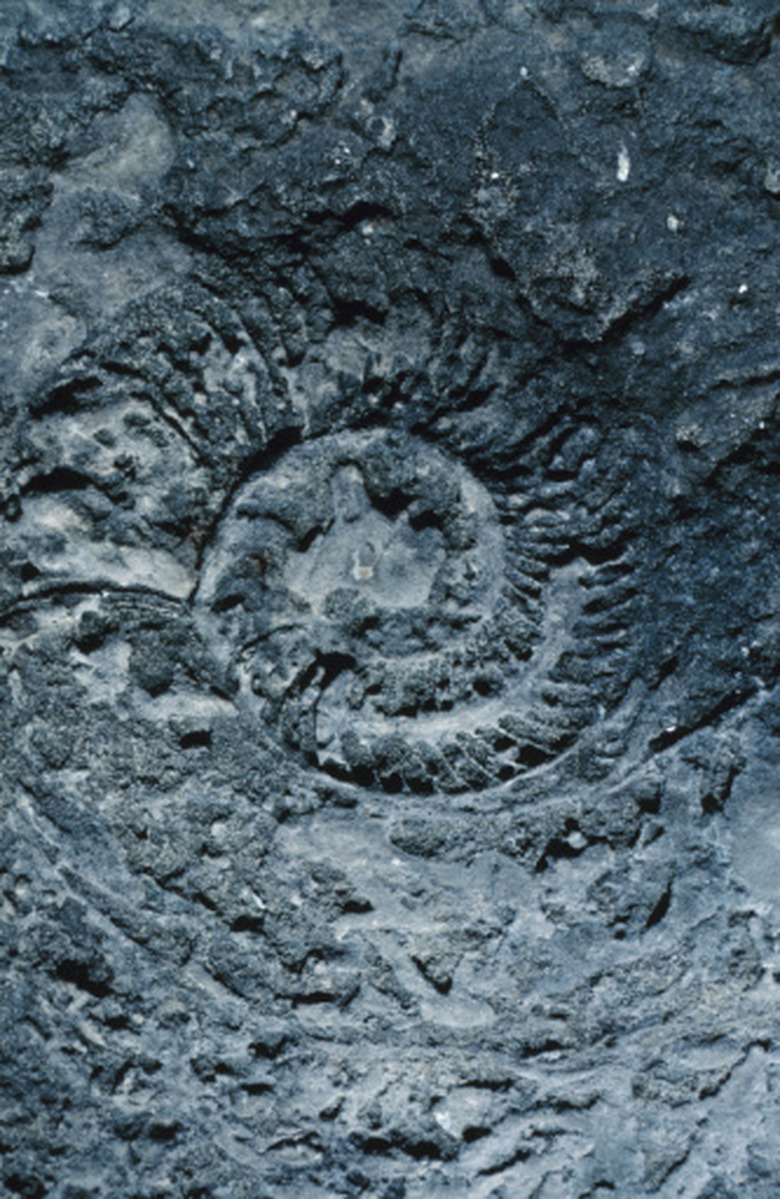What Different Types Of Fossils Are There?
Fossils generally form either as mold fossils or as cast fossils and are either considered a trace fossil or a body fossil. An imprint or the natural cast of a footprint in rock is an example of a mold fossil and a trace fossil, while a mineral deposit in the shape of a shell is an example of a cast fossil and a body fossil. In rare cases, organisms, or parts of organisms, are entirely preserved. Fossils help scientists to understand the behavior, movement, diet, habitat, and anatomy of prehistoric organisms.
Mold Fossils: The Natural Cast
Mold fossils come from a process called authigenic preservation; a process which leaves a negative impression, or indent, of an organism in rock after the organism itself has deteriorated. Sand or mud covers the deceased organism and, over time, that sand or mud hardens into rock, encasing the organism. The organism continues to decay, eventually leaving only an imprint. Entire organisms, partial organisms, or even traces of the passing of organisms can leave mold fossils.
Cast Fossils
Cast fossils occur when mold fossils are filled in with minerals that harden over time, creating a fossilized replica of the original organism. Water seeps through the rock surrounding the mold fossil, leaving behind minerals which fill the mold. The minerals harden, taking the shape, or the natural cast, of the mold fossil.
Any mold fossil can potentially form a cast mold. The water seepage, strength of the mold fossil and available minerals in the area are the determining factors.
Trace Fossils
Trace fossils, also known as ichnofossils, are fossils created by the passing of an organism, rather than fossils of the organism itself. Trace fossils include:
• footprints
• toothmarks
• fossilized feces
• burrows
• nests
Footprints provide knowledge about speed, length of stride, how many legs the organism walks on and how the organism holds its tail, hunting behavior and herd behavior.
Body Fossils
Body fossils are fossils that include part of, or the entire body of, an organism. Bones, teeth, claws, eggs, skin and soft tissues are all examples of body fossils. Bones, teeth, and fossilized eggs are the most common body fossils.
Skin, muscles, tendons, and organs decay quickly and thus are rarely preserved, although rare imprints have been discovered. Body fossils provide information about an organism's diet, reproduction, anatomy, and adaptations. Like trace fossils, body fossils can be either mold or cast fossils.
Petrified Fossils
Petrification occurs when minerals permeate and harden an organism, or part of an organism, or when an organism it is encased in a substance that does not allow decomposition. A piece of petrified wood and an insect trapped in amber are two examples of petrification. Although mold fossils and cast fossils involve petrification, petrified fossils are different in that the original organism has not decayed or disintegrated.
Cite This Article
MLA
Wood, Cristel. "What Different Types Of Fossils Are There?" sciencing.com, https://www.sciencing.com/different-types-fossils-there-8080215/. 31 July 2019.
APA
Wood, Cristel. (2019, July 31). What Different Types Of Fossils Are There?. sciencing.com. Retrieved from https://www.sciencing.com/different-types-fossils-there-8080215/
Chicago
Wood, Cristel. What Different Types Of Fossils Are There? last modified March 24, 2022. https://www.sciencing.com/different-types-fossils-there-8080215/
